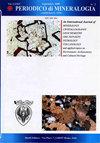使用机器学习算法确定设置急诊室的最佳位置
IF 1.2
4区 地球科学
Q3 GEOCHEMISTRY & GEOPHYSICS
引用次数: 0
摘要
根据好事达加拿大安全驾驶研究报告,2014-2015年,多伦多在加拿大城市事故率中排名第69位,平均每100辆车发生6.45起事故。北约克和阿贾克斯,多伦多的边界,事故率更糟,平均每100辆车7.02至7.12。事故率越高,死亡率就越高。通过缩短事故发生和开始医疗护理之间的时间间隔,人们可以防止死亡或永久残疾。事故区域与急诊室之间的距离对降低事故死亡率起着至关重要的作用。根据报告,大多数事故发生在城市的郊区,而不是城市内部。但通常大多数急诊室都在城里。在这种情况下,急诊室大多远离事故区域。这项工作的目标是使用机器学习算法预测建立急诊室的最合适地点。在多伦多的事故区域,数据集取自多伦多公共服务数据门户网站,急诊室的位置从Foursquare API检索。在对两个数据集进行映射后,将急诊室附近的事故区(距离1公里)移除。然后利用分层dbscan找到事故密集区域。采用K近邻算法对异常值进行寻址。通过取每个聚类的平均值,找到适合急诊室的(核心)位置。找到了核心位置和急诊室之间的距离。距离最远的核心位置被认为是建立新急诊室的最佳地点。本文章由计算机程序翻译,如有差异,请以英文原文为准。
Identifying the Optimal Location to Set up an Emergency Room Using Machine Learning Algorithms
: As per the the Allstate Canada Safe Driving Study report, Toronto was in 69 th position in accident rate among Canadian cities with an average of 6.45 accidents per 100 cars in 2014-2015. North York and Ajax, the borders of Toronto the accident rate was even worse with an average of 7.02 to 7.12 per 100 cars [1]. The higher the accident rate, the higher the death rate. By reducing the time lag between the accident and the initiation of medical care, one can prevent death or permanent disability. The distance between the accidents zones the emergency room play the vital role in reducing the death rate due to accident. As per the report, most of the accidents were at the outskirts of the city rather than within the city. But usually the most of the emergency rooms are within the city. In such cases mostly, the emergency rooms were far away from the accident zones. The objective of the work is to predict the most suitable place for establishing the emergency rooms using machine learning algorithms. Accident zones in Toronto, the dataset was taken from Toronto public service data portal and locations of emergency rooms were retrieved from Foursquare API. After mapping both the data set, the accident zones near the emergency rooms (which are at the distance of 1 km) are removed. Then accident dense area was found using hierarchical dbscan. K nearest neighbor algorithm is used to address the outliers. The suitable (core) location for the emergency room was found by taking the mean of each cluster. The distance between the core location and the emergency room was found. The core location with the longest distance was considered as the best place for establishing the new emergency room.
求助全文
通过发布文献求助,成功后即可免费获取论文全文。
去求助
来源期刊

Periodico Di Mineralogia
地学-地球化学与地球物理
CiteScore
1.50
自引率
14.30%
发文量
0
审稿时长
>12 weeks
期刊介绍:
Periodico di Mineralogia is an international peer-reviewed Open Access journal publishing Research Articles, Letters and Reviews in Mineralogy, Crystallography, Geochemistry, Ore Deposits, Petrology, Volcanology and applied topics on Environment, Archaeometry and Cultural Heritage. The journal aims at encouraging scientists to publish their experimental and theoretical results in as much detail as possible. Accordingly, there is no restriction on article length. Additional data may be hosted on the web sites as Supplementary Information. The journal does not have article submission and processing charges. Colour is free of charges both on line and printed and no Open Access fees are requested. Short publication time is assured.
Periodico di Mineralogia is property of Sapienza Università di Roma and is published, both online and printed, three times a year.
 求助内容:
求助内容: 应助结果提醒方式:
应助结果提醒方式:


